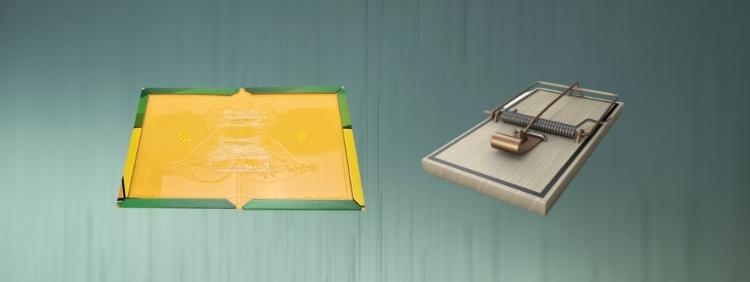Burlington Rodent Control: Are Glue and Snap Traps Cruel?

When thinking about pest control in Burlington, many people think of extermination. However, extermination should be a last resort. Many times, pest control solutions can include hygiene and property maintenance. Additionally, some experts might use exclusionary tools like one-way exits. Unfortunately, sometimes extermination is the only way to salvage property. However, just because lethal measures are taken for some pests, like insects, does not mean the process is inhumane.
When carried out by professional services, pests can be eliminated humanely. Unfortunately, many people do not take the time to hire or assess different pest control services, instead opting for glue or snap traps. These traps are necessarily violent and ineffective. DIY solutions rarely work and are often inhumane.
Understanding the Definition of Inhumane
Most traps you can purchase at big-box chains are inhumane. The manufacturers design a product that can kill by any possible means, whether by restricting movement or destroying parts of the body. The issue with such designs is they do not consider the cruelty or unnecessary pain caused to the animal. Most traps prolong suffering, and many fail to kill the animal or pest.
The Cruelty of Glue Traps
Glue traps are some of the most inhumane designs for extermination practices. The design is simple: an enticing area encourages exploration, and an incredibly sticky surface holds the creature in place. The trap does not kill the animal; it only holds them. However, the trap can lead to the animals agonizing death.
When using a glue trap on a rodent, the animal panics when it gets stuck, which leads to it getting even more stuck. The glue is caustic and can lead to burns and difficulty breathing, possibly even suffocation. If the glue does not kill it, starvation or predators will.
Glue traps require constant supervision, and in many cases, require the homeowner or property owner to finish the job of killing the pest. Most people cannot kill a living thing, which means the animal continues to suffer. Because it is immobile, it cannot defend itself against predators and cannot run, which means it is essentially eaten alive.
The Suffering of Snap Traps
Snap traps are not only inhumane, but they are also ineffective. They rely on a trigger loaded with bait, a spring, and a thin crossbar. When the pest takes the bait, the trap releases, rapidly bringing a bar down on the animal. The best-case scenario is that the trap kills the pest immediately, but the device fails too often.
Manufacturers build such devices on the premise that mice and rodents will stand still and wait for the trap. However, mice and rats are incredibly limber and agile, so they often get their heads and necks out of the way. While the trap may connect with a part of the animal’s body and eventually lead to its death, the dying process will be excruciating and long.
Even if the trap does not kill the pest and it manages to escape, any sustained injuries could lead to death. Again, the death is violent and prolonged.
The Faulty Efficacy of Glue and Snap Traps
Glue and snap traps often fail to result in a quick and efficient death. The animals or pests are left to suffer unimaginable pain until a homeowner notices it or a predator finishes it off. While many traps claim efficiency and quick deaths, they significantly overcompensate the product’s efficacy.
Why Professional Pest Control Services Are Better
Do not resort to DIY methods or traditional traps and poisons if you have a pest problem. These products are ineffective and inhumane. No extermination product should prolong suffering, and such tools should only be used as a last resort.
If you need rodent removal services, contact Truly Nolen for help. The humane pest control service is a leader in their field and appreciates and respects all living things.